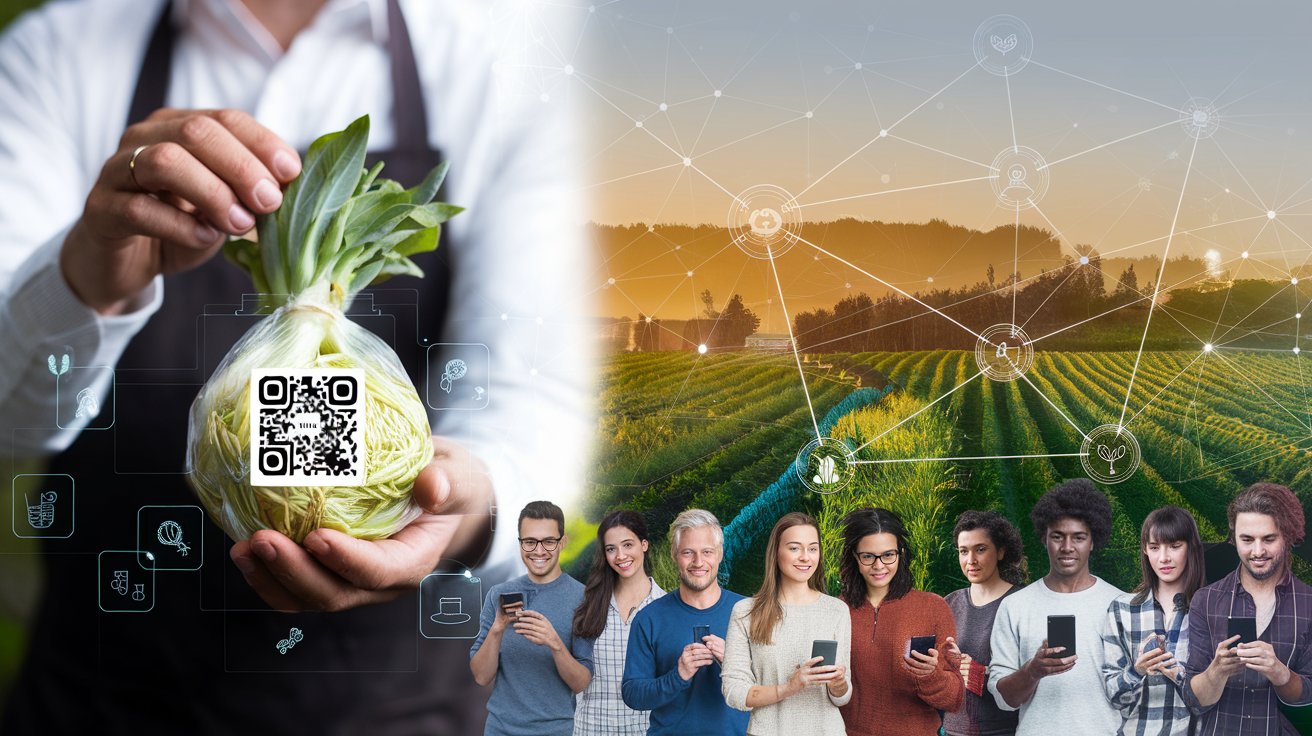Introduction
In an age where consumers are increasingly conscious of where their food comes from, the demand for transparency in the food supply chain has never been more critical. Blockchain technology offers a revolutionary solution by providing an immutable, decentralized ledger that allows consumers to trace the entire journey of their food from farm to table. This article delves into the concept of blockchain for supply chain transparency, its present market depth, future scope, and the immense possibilities it holds for ethical sourcing and production practices.
Understanding Blockchain Technology
Blockchain is a distributed ledger technology that records transactions across multiple computers in such a way that the registered information cannot be altered retroactively without the consensus of the network. Each transaction is grouped into a block and linked to the previous block, creating a secure and transparent chain of information. This technology provides several key features:
- Transparency: All participants in the network have access to the same information, promoting accountability.
- Traceability: Every transaction is recorded, allowing for complete traceability of products throughout the supply chain.
- Security: The decentralized nature of blockchain minimizes the risk of data tampering and fraud.
Current Market Depth
- Consumer Demand for Transparency
- According to recent surveys, over 70% of consumers express a desire for more information about the origin of their food. They want to know if their food is sustainably sourced, ethically produced, and free from harmful chemicals.
- The COVID-19 pandemic has further amplified this demand, with consumers becoming more mindful of their purchasing decisions and the food supply chain.
- Adoption by Major Brands
- Leading companies in the food industry, such as Walmart and Nestlé, are already leveraging blockchain technology to enhance supply chain transparency. Walmart uses IBM’s Food Trust blockchain to track the provenance of fresh produce, enabling rapid traceability in case of food safety concerns.
- These early adopters have set a precedent, encouraging other businesses to explore blockchain solutions for their supply chains.
- Investment in AgriTech
- The global AgriTech market is projected to reach over $41 billion by 2027, with blockchain technology being a significant driver of growth. Investors are increasingly funding startups that focus on enhancing food traceability and transparency.
Future Scope of Blockchain in Food Supply Chains
- Enhanced Traceability and Safety
- With blockchain, consumers can scan a QR code on packaging to access detailed information about the product’s journey, including where it was grown, how it was processed, and when it was shipped. This enhanced traceability will empower consumers to make informed choices about their food.
- In case of food safety issues, blockchain can enable rapid recalls by providing a clear and accurate history of the product’s movements through the supply chain.
- Ethical Sourcing and Sustainability
- Blockchain technology can verify claims related to ethical sourcing and sustainability. For instance, consumers could easily confirm whether a product is organic, fair-trade, or sourced from sustainable farms, fostering trust between producers and consumers.
- This capability will drive companies to adopt more sustainable practices, knowing that consumers can verify their claims.
- Integration with IoT and Smart Contracts
- The future of blockchain in supply chains will likely involve integration with the Internet of Things (IoT). IoT devices can collect real-time data on product conditions during transportation and storage, automatically updating the blockchain ledger.
- Additionally, smart contracts—self-executing contracts with the terms directly written into code—can automate processes such as payments and compliance checks, reducing administrative burdens and increasing efficiency.
Possibilities and Challenges
- Increased Consumer Trust
- By providing transparency and traceability, blockchain can significantly enhance consumer trust in food brands. This trust is vital for building long-term relationships and loyalty with consumers who prioritize sustainability and ethical practices.
- Collaboration Across the Supply Chain
- Implementing blockchain requires collaboration among various stakeholders in the supply chain, including farmers, processors, distributors, and retailers. This collaborative approach can foster better communication and partnerships, ultimately leading to a more efficient and transparent system.
- Challenges of Implementation
- While blockchain holds immense potential, there are challenges to its widespread adoption. These include:
- Technical Complexity: Integrating blockchain with existing systems can be complex and require significant investment in technology and training.
- Data Privacy Concerns: Ensuring that sensitive business information remains confidential while still providing transparency poses a challenge.
- Standardization: Establishing universal standards for blockchain implementation across the food industry is crucial for achieving consistency and interoperability.
- While blockchain holds immense potential, there are challenges to its widespread adoption. These include:
Conclusion
Blockchain technology has the potential to revolutionize food supply chains by enhancing transparency, traceability, and trust between producers and consumers. As consumers increasingly demand information about the origins and safety of their food, blockchain can provide a secure and verifiable means of meeting these expectations. The current market depth and future possibilities highlight the growing importance of this technology in promoting ethical sourcing and sustainable practices in agriculture. Despite the challenges, the path forward for blockchain in food supply chains is promising, paving the way for a more transparent, accountable, and trustworthy food system. Embracing this innovation will not only benefit consumers but also contribute to a more sustainable and ethical food landscape for generations to come.




